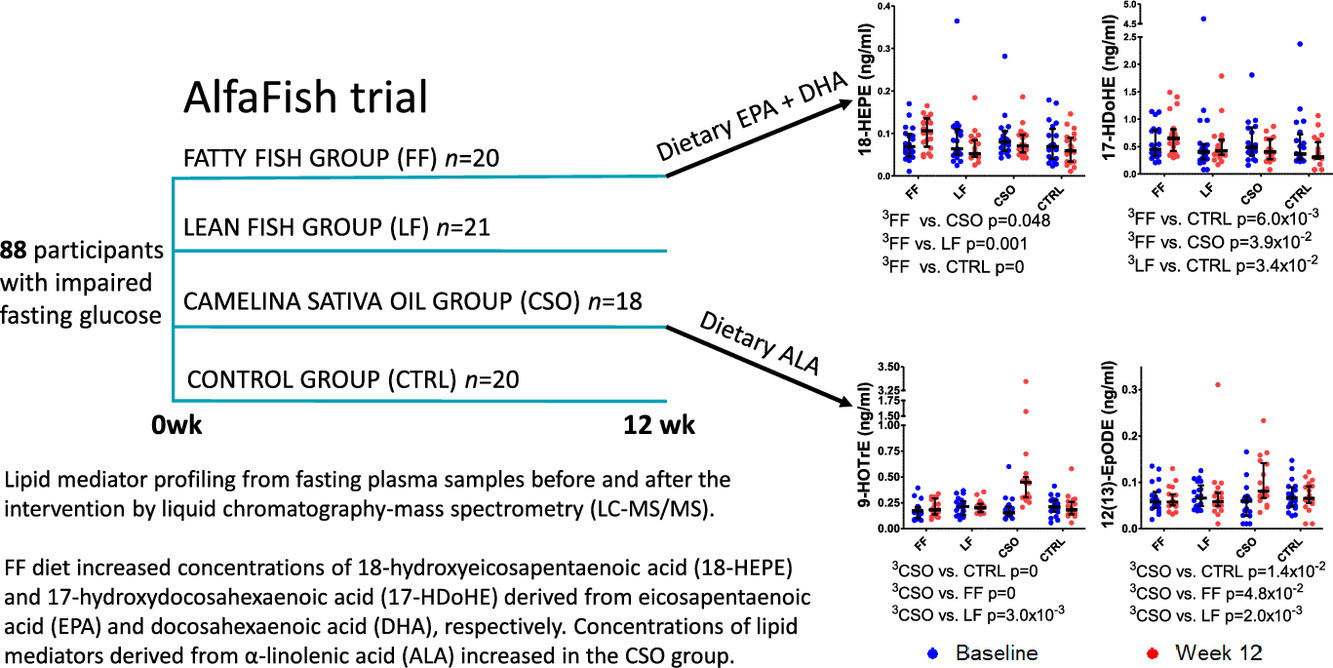Intake of Camelina Sativa Oil and Fatty Fish Alter the Plasma Lipid Mediator Profile in Subjects with Impaired Glucose Metabolism – A Randomized Controlled Trial
Maria A.Lankinen Prostaglandins, Leukotrienes and Essential Fatty Acids Volume 159, August 2020, 102143
Highlights
• Dietary short and long chain n-3 fatty acids modify lipid mediator profiles.
• Eating of fatty fish increases concentrations of hydroxy derivatives of EPA and DHA.
• Changes in n-3 lipid mediator concentrations follow the intake of their precursor PUFA.
n-3 and n-6 polyunsaturated fatty acids (PUFAs) and their lipid mediator metabolites are associated with inflammation. We investigated the effect of dietary intake of plant- and animal-derived n-3 PUFAs and fish protein on the circulatory concentrations of lipid mediators. Seventy-nine subjects with impaired fasting glucose who completed the controlled dietary intervention after randomization to the fatty fish (FF, n=20), lean fish (LF, n=21), Camelina sativa oil (CSO, n=18) or control group (n=20) for 12 weeks were studied. Lipid mediator profiling from fasting plasma samples before and after the intervention was performed by liquid chromatography-mass spectrometry (LC-MS/MS).
The FF diet increased concentrations of 18-hydroxyeicosapentaenoic acid (18-HEPE) and 4- and 17-hydroxydocosahexaenoic acid (4-, 17-HDoHE) derived from eicosapentaenoic acid (EPA) and docosahexaenoic acid (DHA), respectively.
Concentrations of lipid mediators derived from α-linolenic acid (ALA) increased and arachidonic acid (AA) derived 5-iso prostaglandin F2α-VI decreased in the CSO group. There were no significant changes in lipid mediators in the LF group.
The dietary intake of both plant and animal-based n-3 PUFAs increased circulatory concentrations of lipid mediators with potential anti-inflammatory properties.














